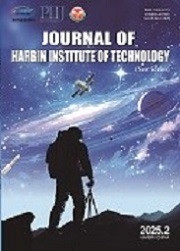| Author Name | Affiliation | | Li Zhang | School of Information, Liaoning University, Shenyang 110036, China | | Jia-Qiang Zhao | School of Information, Liaoning University, Shenyang 110036, China | | Xu-Nan Zhang | Department of Automation, Tsinghua University, Beijing 100084, China | | Sen-Lin Zhang | School of Information, Liaoning University, Shenyang 110036, China |
|
| Abstract: |
| In order to overcome shortcomings of traditional BP neural network, such as low study efficiency, slow convergence speed, easily trapped into local optimal solution, we proposed an improved BP neural network model based on adaptive particle swarm optimization (PSO) algorithm. This algorithm adjusted the inertia weight coefficients and learning factors adaptively and therefore could be used to optimize the weights in the BP network. After establishing the improved PSO-BP (IPSO-BP) model, it was applied to solve fault diagnosis of rolling bearing. Wavelet denoising was selected to reduce the noise of the original vibration signals, and based on these vibration signals a wide set of features were used as the inputs in the neural network models. We demonstrate the effectiveness of the proposed approach by comparing with the traditional BP, PSO-BP and linear PSO-BP (LPSO-BP) algorithms. The experimental results show that IPSO-BP network outperforms other algorithms with faster convergence speed, lower errors, higher diagnostic accuracy and learning ability. |
| Key words: improved particle swarm optimization inertia weight learning factor BP neural network rolling bearings |
| DOI:10.11916/j.issn.1005-9113.2013.05.019 |
| Clc Number:TP399 |
| Fund: |






